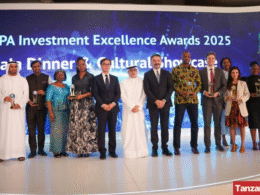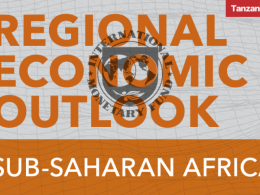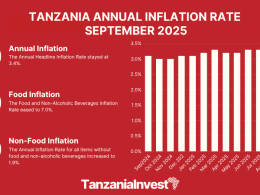The African Development Bank (AfDB) has recently released its first Africa’s Macroeconomic Performance and Outlook – January 2023, in which it estimates that the GDP of Tanzania will have grown by +4.6% in 2022, and projects it will grow by 5.1% in 2023, and by 6.1% in 2024.
These estimates are similar to the ones the World Bank (WB) includes in its recently issued Global Economic Prospects report of January 2023.
According to the AfDB, global macroeconomic conditions have recently become increasingly uncertain with the persistence of multiple shocks that make policymaking and investment decisions very challenging.
The highly volatile external environment has spilled over to the African continent, threatening to halt the gradual recovery from the lingering effects of the COVID-19 pandemic.
The Bank’s estimates show that Africa’s average real GDP growth slowed to 3.8% in 2022.
The slowdown reflects the impacts of downside factors, including spillovers from rising geopolitical tensions, climate change risks, and the lingering impacts of the COVID-19 pandemic, which have been amplified by tightening global financial conditions and the associated increase in domestic debt service costs.
However, despite the challenging external environment, Africa has demonstrated continued resilience, with all but one country maintaining positive growth in 2022 and with outlooks stable for 2023 and 2024.
Africa’s GDP growth is projected to average about 4% in 2023 and 2024, higher than the projected world average of 2.7% cent and 3.2% respectively.
The top five performing African countries before the COVID-19 pandemic are projected to grow by more than 5.5% and could reclaim their position among the world’s top 10 fastest-growing economies in 2023–24.
For East Africa, growth is estimated to have moderated to 4.2% in 2022 from 5.1% in 2021 but is projected to recover to the pre-pandemic average above 5.0% in 2023 and 2024.
While East Africa’s production structure is relatively diversified, countries in the region are largely net importers of commodities. They thus bear the brunt of high international prices in addition to recurrent climate shocks and insecurity, particularly in the Horn of Africa.
The projected stability in medium-term growth in Africa largely reflects the benefits of policy support in Africa, global efforts to mitigate the impacts of exogenous shocks and rising uncertainty, and stable growth in Asia, one of Africa’s main trading partners.
However, this welcome recovery and the economic resilience of African economies come with cautious optimism, as global financial conditions have tightened and are projected to remain restrictive in the near term, compounded by increased volatility in global financial markets and persistent disruptions in global supply chains.
This could put further pressure on exchange rates and keep debt vulnerabilities and domestic inflation elevated, threatening food and energy security in most African countries.
In his foreword, Dr. Akinwumi Adesina, President of the African Development Bank Group concludes by writing “Let us stand together to build the Africa we want—a continent that continues to play pivotal roles in improving the quality of its citizens’ lives and contributing to the sustainability of economies everywhere.”
Africa’s Macroeconomic Performance and Outlook is the African Development Bank Group’s new biannual publication to be released in the first and third quarters of each year.
The publication will offer policymakers, global investors, researchers, and other development partners an up-to-date evidence-based assessment of the continent’s recent macroeconomic performance and short-to-medium-term outlook amid dynamic global economic developments.
The new report will feature forecasts and analysis from the surveillance of regional and global macroeconomic developments.
Africa’s Macroeconomic Performance and Outlook will complement the African Economic Outlook, the Bank’s long-standing flagship publication, which focuses on key emerging policy themes relevant to Africa’s development.











